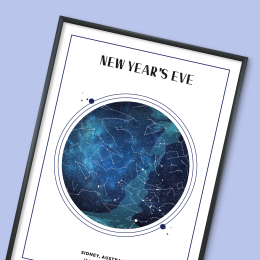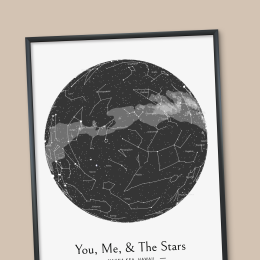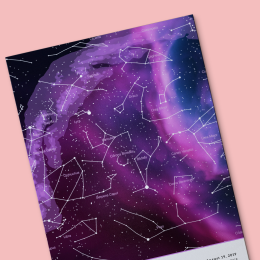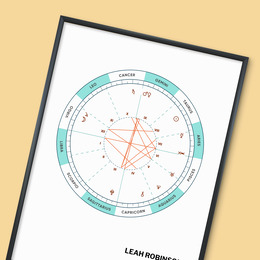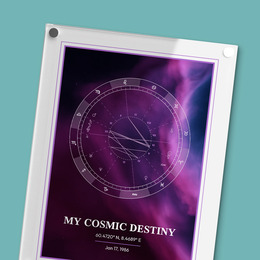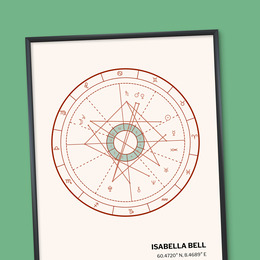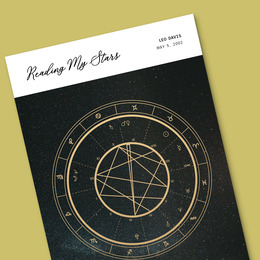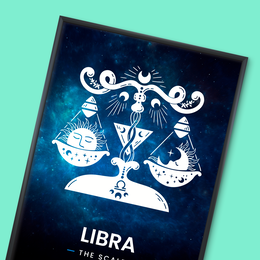
Hipparchus Manuscript: Oldest Map & Ancient Star Maps
Hipparchus’s manuscript stands as a testament to the oldest known attempt at mapping the stars. While not a physical map in the conventional sense, his star catalog, known as the "Hipparchus Star Catalogue," is recognized as one of the earliest documented compilations of celestial positions.
Although focusing on the precise location of stars rather than a visual representation, it holds significance as a foundational document in ancient star mapping history.
The Hipparchus manuscript doesn't directly correlate with terrestrial maps like Imago Mundi, the oldest map of the world created by Babylonians in the 6th century BC, which primarily depicts Earth's geography.
Instead, it played a crucial role in charting the celestial sphere, aligning with the concept of a star map by date.
Hipparchus's astronomical observations and meticulous documentation contributed immensely to the creation of chronological records of celestial movements and positions over time.
Ancient star maps, including Hipparchus's work, paved the way for future explorations of the cosmos and astronomical advancements. They offered valuable insights into the stars' behavior and their relation to earthly events, influencing cultural beliefs, navigation, and scientific inquiries across civilizations.
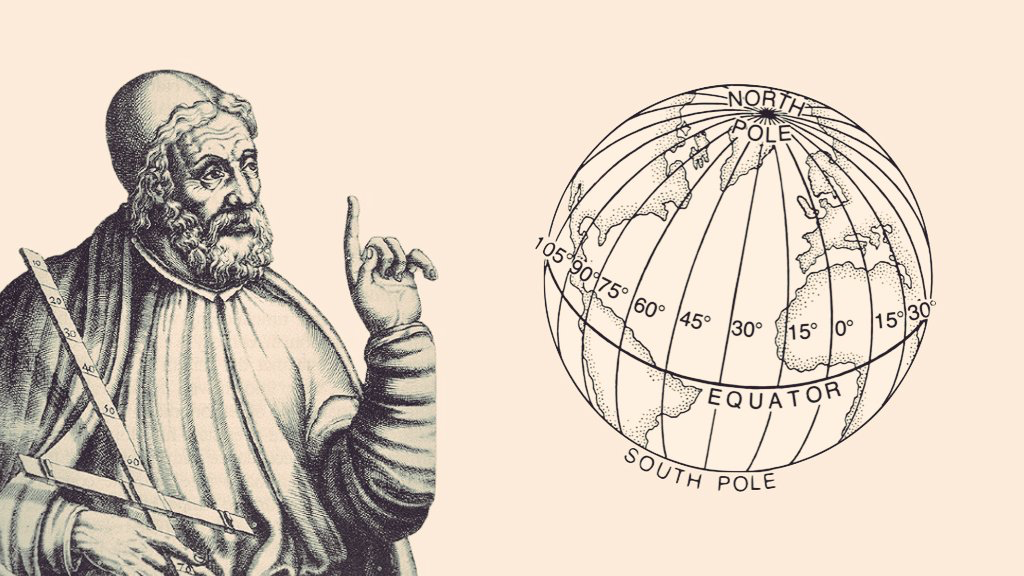
The Origins of Star Mapping
Ancient star maps, while not similar to traditional terrestrial maps, exemplified the earliest attempts to depict the celestial sphere. These maps, akin to a star viewer or a starry night sky map, provided an artistic representation of the night sky's arrangement, aiding observers in identifying constellations and celestial patterns.
Though not akin to world oldest map in terms of terrestrial depiction, these astronomical artifacts showcased humanity's profound interest in understanding the cosmos.
The world's oldest map, typically illustrating geographical features, differs from ancient star maps that focused on celestial positions.
While the former emphasized earthly landscapes and territorial delineations, ancient star maps centered on portraying the arrangement of stars and their significance in cultural, navigational, and astronomical contexts.
These early celestial charts, serving as guides to the night sky, captivated ancient civilizations' imagination and curiosity. While not directly akin to conventional terrestrial maps, they were invaluable tools for understanding and navigating the heavens, fostering a deeper connection between humanity and the cosmos.
Hipparchus's Manuscript and its Historical Context
The Hipparchus Manuscript, unfortunately lost to time, was a pivotal astronomical document attributed to the Greek astronomer Hipparchus, outlining his observations, calculations, and celestial findings. This manuscript was foundational in establishing the star catalog and its meticulous records.
Although a majority of the manuscript remains lost, researchers have found parts of it hidden away in a medieval codex, shedding some light on the astronomer’s tactics to map the stars above us.
Hipparchus employed a pioneering methodology in charting the stars, utilizing a system based on magnitudes to assess the brightness of celestial bodies. He categorized stars according to their visual brightness, pioneering a system that laid the groundwork for subsequent astronomers' classifications.
The Hipparchus Star Catalogue is historically significant as it represented the earliest attempt at a systematic and scientific approach to astronomy.
It laid the foundation for future star catalogs and influenced the development of astronomy by providing a detailed record of celestial objects, their positions, and magnitudes, thereby advancing the understanding of the cosmos.
The Oldest Maps of the Heavens and Earth
The oldest world maps and star maps, akin to a star viewer or a starry night sky map, reveal the evolution of ancient cartographic techniques.
While the oldest map in the world predominantly showcased geographical landscapes, these celestial charts focused on illustrating cosmic entities, including stars, planets, and constellations star chart, offering glimpses into early cosmological beliefs.
Enduring Significance and Legacy
The antiquity of these maps, considered among the oldest maps and world's oldest maps, testifies to humanity's fascination with the stars and the Earth's representation.
Their significance lies not only in their historical context but also in their enduring legacy, serving as foundational references for subsequent advancements in mapping and astronomical studies.
Reviving Ancient Wisdom: Modern Live Star Maps
The concept of a live star map, a modern technological innovation inspired by ancient celestial mapping, allows contemporary enthusiasts to interact with a dynamic representation of the night sky.
These digital representations, echoing the essence of the oldest maps, bridge the gap between ancient stargazers and present-day sky observers, fostering a timeless fascination with celestial navigation and exploration.
The Development of Constellation Mapping
The concept of mapping constellations, evident in ancient star maps and continuing to evolve through medieval representations, reflects humanity's enduring fascination with the night sky.
From the star map night sky depictions to the world's first map of constellations, these ancient renderings served as guides for cultural, navigational, and mythological purposes.
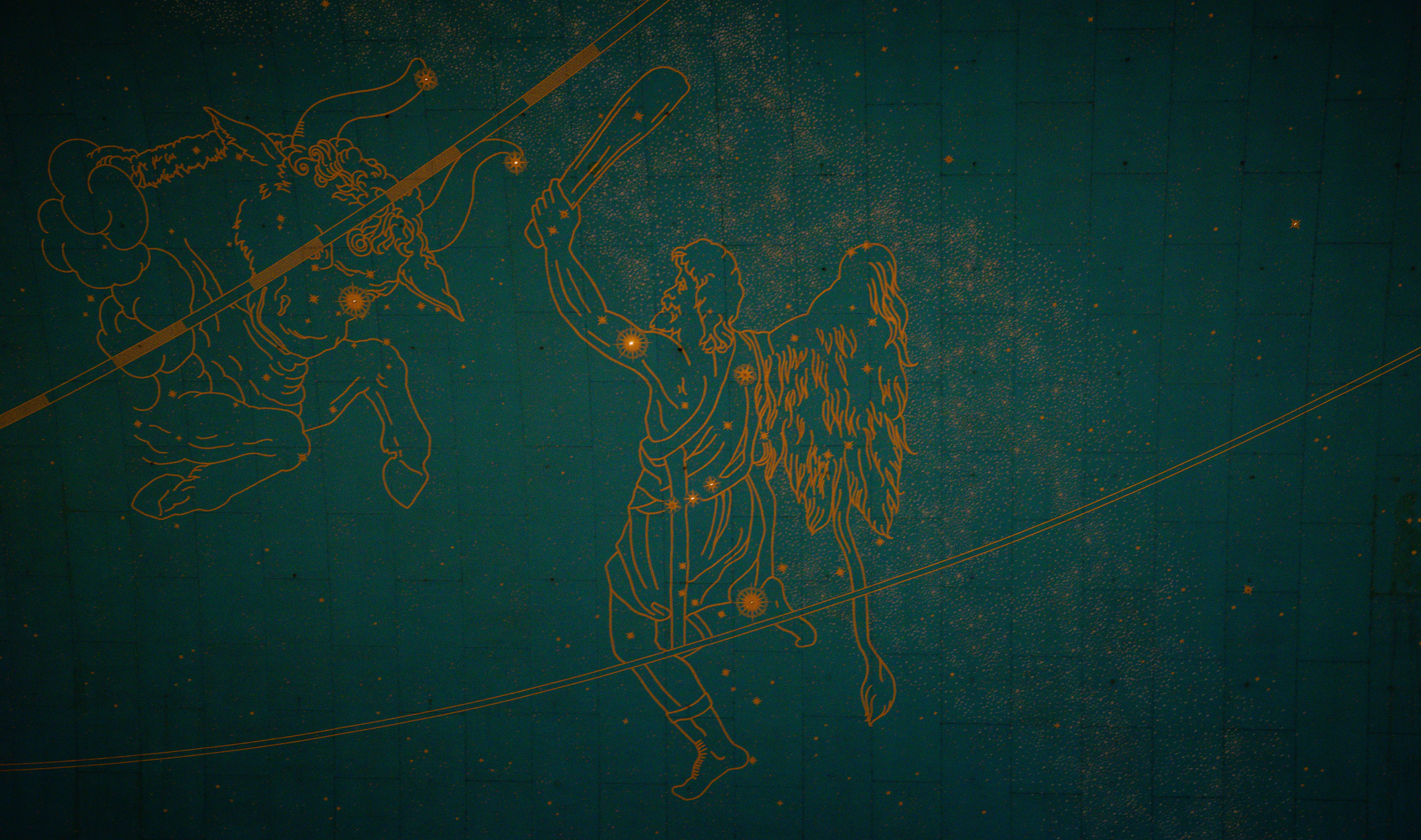
Identifying Constellations: From Ancient to Medieval Star Charts
The journey of constellation mapping traces its roots back to ancient civilizations, where early astronomers observed the night sky and identified patterns among the stars.
In these early times, constellations served as a celestial canvas, capturing the imaginations of cultures across the globe. Early civilizations, driven by curiosity and an innate connection to the cosmos attributed significance to these celestial configurations.
From the Babylonians to the Greeks, each civilization contributed to the rich tapestry of constellations, assigning mythological narratives to these stellar arrangements. This ancient practice laid the foundation for what would later evolve into more sophisticated mapping techniques.
As societies entered the medieval era, the art of constellation identification progressed with the creation of star charts. These intricate charts depicted the positions of stars within constellations, providing a visual reference for astronomers and navigators alike.
Ptolemy, a prominent figure in ancient astronomy, significantly influenced the development of star charts with his work "Almagest," which cataloged and described numerous constellations. Through the meticulous recording of celestial positions, these medieval star charts became invaluable tools for understanding the night sky.
The Concept of the Constellation Star Chart and Map
The concept of the constellation star chart emerged as a revolutionary approach to organizing and navigating the vastness of the night sky.
Instead of merely recognizing constellations as isolated patterns, astronomers sought to create comprehensive maps that illustrated the relationships between different stellar formations. This conceptual shift marked a pivotal moment in the evolution of constellation mapping.
Early astronomers began to devise systematic methods for plotting stars on a two-dimensional plane, allowing for easier identification and navigation. The development of coordinate systems and the integration of observational data into these charts enhanced the accuracy of celestial mapping.
The constellation star chart became a powerful visual aid, aiding astronomers in their pursuit of understanding the cosmos.
The Use of Constellation Maps Across Different Cultures
Constellation maps transcended cultural boundaries, finding utility and significance in diverse societies. Across different cultures, from the Chinese to the indigenous peoples of the Americas, constellation maps served various purposes.
In addition to aiding navigation and timekeeping, these maps often held cultural and spiritual significance, reflecting the unique perspectives of each civilization.
The adaptability of constellation maps allowed for a fusion of scientific understanding and cultural interpretation. Whether used for agricultural calendars, religious ceremonies, or celestial navigation, the universal fascination with the night sky fostered a shared human experience.
What Constellations Mean to Different Cultures | Fate & Fabled
The Advancements of Cartography in Star Mapping
The progression in star mapping from ancient sketches to modern representations is a testament to humanity's continuous quest to comprehend the celestial realm.
Astronomical star maps, evolving from rudimentary depictions to sophisticated visualizations, reflect the accumulation of astronomical knowledge across centuries.
The astronomical star map has transitioned from basic drawings in ancient times to comprehensive and accurate representations using advanced technologies, demonstrating the advancement in celestial cartography.
|
Milestone in Celestial Cartography |
Description |
|---|---|
|
Ancient Sketches and Early Depictions |
Basic drawings and rudimentary representations in ancient times. |
|
Hipparchus's Star Catalog |
A pivotal achievement by Hipparchus, establishing precise measurements and systematic documentation of star positions and magnitudes. |
|
Evolution to Modern Representations |
Transition from static representations in early maps to dynamic and interactive modern star maps using advanced technologies. |
|
Transformation to Live Star Maps |
Advancements enabling real-time, personalized views of the night sky through digital platforms, offering an immersive experience. |
The evolution from static to live star maps signifies a remarkable shift in the way we perceive and interact with celestial cartography. Early star maps, including the Hipparchus star catalog, were static representations, limited by the available technology of their time.
However, with technological advancements, modern star maps have transformed into dynamic, interactive tools. Today, users can access real-time, personalized views of the night sky through digital platforms, offering an immersive experience that transcends traditional static representations.
Practical Uses of Ancient Star Maps
Ancient star maps, pivotal in ancient times, served practical purposes across diverse domains, leveraging celestial bodies for navigation, cultural significance, and modern-day applications.
Navigation relied heavily on star maps for guidance during voyages. Sailors utilized constellations as celestial markers, navigating oceans by aligning stars with geographical positions, a practice vital for maritime exploration and trade routes.
Astrology, steeped in the cultural significance of star positions, linked celestial movements to worldly events and individual destinies. Ancient civilizations associated star maps with spiritual and predictive purposes, shaping beliefs and societal practices.
Modern applications of star locator coordinates utilize ancient mapping principles in contemporary technologies.
With advancements in astronomy and navigation, star coordinates serve in satellite positioning, GPS systems, and astronomical research, underscoring the enduring relevance of ancient star maps in modern applications.
Modern Interpretations and Representations
Modern advancements in star mapping bring the cosmos closer through innovative digital platforms, offering personalized experiences and interactive tools for stargazing enthusiasts.
Online sky maps and digital reconstructions provide accessible celestial exploration. These platforms offer virtual access to the night sky, allowing users to observe stars, constellations, and planets from any location, fostering astronomical engagement and education.
Creating custom star maps by date has also gained popularity, allowing users to commemorate special occasions by generating custom star charts. These charts depict how the night sky looked on a specific date and location, offering a unique and sentimental way to capture memorable moments.
Interactive tools, like live constellation maps by date and star coordinates finders, revolutionize stargazing. These tools provide real-time tracking of celestial objects and aid in identifying stars, planets, and constellations, enhancing the interactive and educational aspects of exploring the night sky.
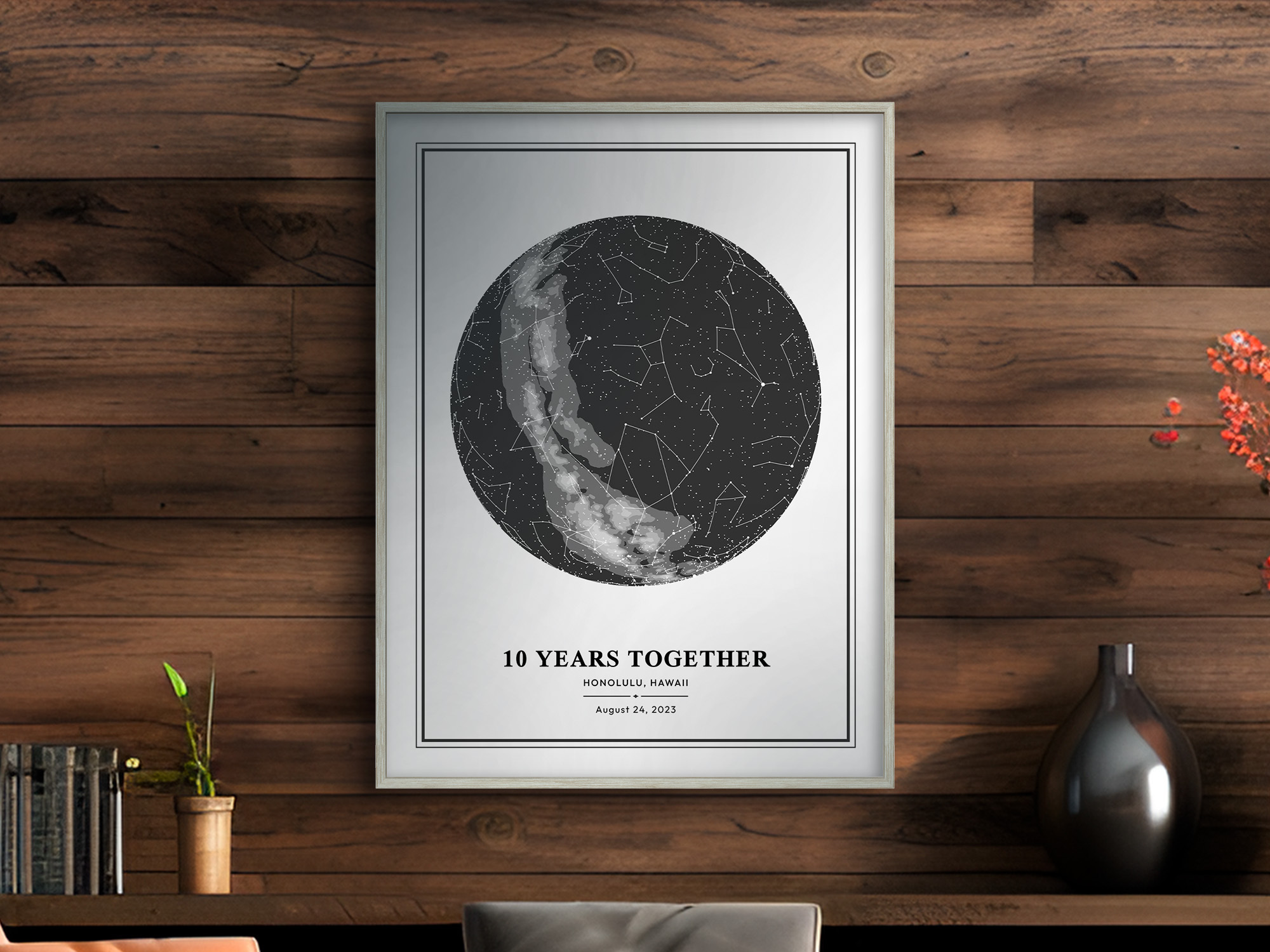
The Legacy of Ancient Star Maps in Modern Astronomy
Modern advancements in star mapping bring the cosmos closer through innovative digital platforms, offering personalized experiences and interactive tools for stargazing enthusiasts.
Online sky maps and digital reconstructions provide accessible celestial exploration. These platforms offer virtual access to the night sky, allowing users to observe stars, constellations, and planets from any location, fostering astronomical engagement and education.
-
Accessible Celestial Exploration: Online sky maps and digital reconstructions offer virtual access to the night sky, allowing users to observe stars, constellations, and planets from any location. These platforms foster astronomical engagement and education on a global scale.
-
Personalized Star Maps: Creating custom star charts by date has gained popularity. Users can commemorate special occasions by generating star maps depicting how the night sky looked on a specific date and location. This offers a unique and sentimental way to capture memorable moments under the stars.
-
Interactive Stargazing Tools: Innovative tools, such as live constellation maps and star coordinates finders, revolutionize stargazing. These interactive platforms provide real-time tracking of celestial objects and assist in identifying stars, planets, and constellations, enhancing the interactive and educational aspects of exploring the night sky.
Although we’ve come a long way since the age of Ptolemy and Mesopotamian or Babylonian star gazing, the foundations our ancestors set still impact us today. They carved the path to cosmic exploration, giving us the tools we needed to decipher stellar movements and even the mathematics needed for us to leave the planet’s atmosphere.

Ancient Star Maps: Bridging Past Wonders with Future Exploration
The captivating allure of ancient star maps persists, their enigmatic beauty and historical significance continuing to fascinate astronomers, historians, and casual stargazers alike.
These maps offer windows into the ancient world's understanding of the cosmos, preserving the celestial knowledge and cultural perspectives of bygone eras.
Future studies in ancient astronomical maps hold exciting prospects, with evolving technologies enabling deeper explorations.
Advancements in imaging techniques and archaeological discoveries may unveil new insights into ancient astronomy, shedding light on previously unknown celestial knowledge and mapping techniques.
As we bridge the ancient past with futuristic aspirations, the exploration of these celestial guides serves as a catalyst for innovation.
It inspires modern astronomers, historians, and researchers to push the boundaries of knowledge and technology, propelling humanity towards a deeper understanding of our celestial surroundings while honoring the remarkable legacy left behind by our ancestors.
As we continue to unravel the mysteries of ancient star maps, their timeless legacy remains a testament to human curiosity and ingenuity.
Exploring these celestial guides offers not just a glimpse into our past but also inspires future astronomical endeavors, ensuring the preservation and appreciation of ancient astronomical heritage.








